| SANTORINI -- FACTS
Santorini's great susceptibility to earthquakes and the lack of water and wood, the strong winds during the winter, the unbearable heat in the summer and the blinding light of the Aegean sun dictated to the Santorinians not only the lay-out of their villages but also the shape, size, even the manner of building of their dwellings. The narrow-fronted Santorinian houses are sometimes excavated underground and sometimes built.
Santorini has an area of 76 square kilometers and a population of about 6500-7000 inhabitants. Its shores are 70 km long. The length of Santorini reaches 18 km. Its width varies from 2 to 6 km. Santorini has 13 (thirteen) villages.
Typical Aegean island climate. Cool summer and mild winter. During the winter it rains often but rarely during the summer.
The fertile volcanic soil, cultivated by Santorinians produces excellent quality but poor quantity. The quantity is limited also because of the fact that the island is almost completely dry. The grapes make excellent wine. The tomatoes produced here are very small but very tasty. A legume smaller than a pea called "fava" is the typical Santorinian dish. A kind of cheese - a very tasty one - called "chloro" is made from goats' milk. (visit our "Cuisine" page and get the recipe for tomato balls, fava and other Santorinian dishes)
Copyright: Hellenic Electronic Center Photos by Ian Swindale |
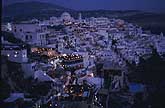
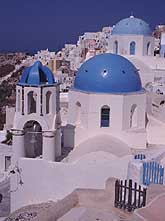
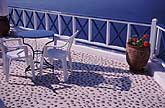
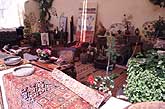
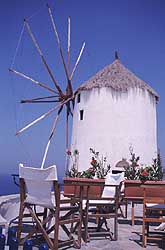
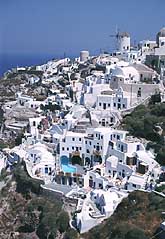

|
|